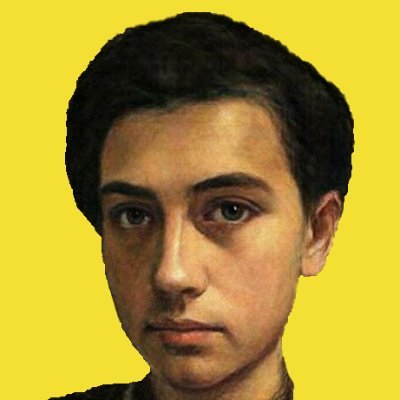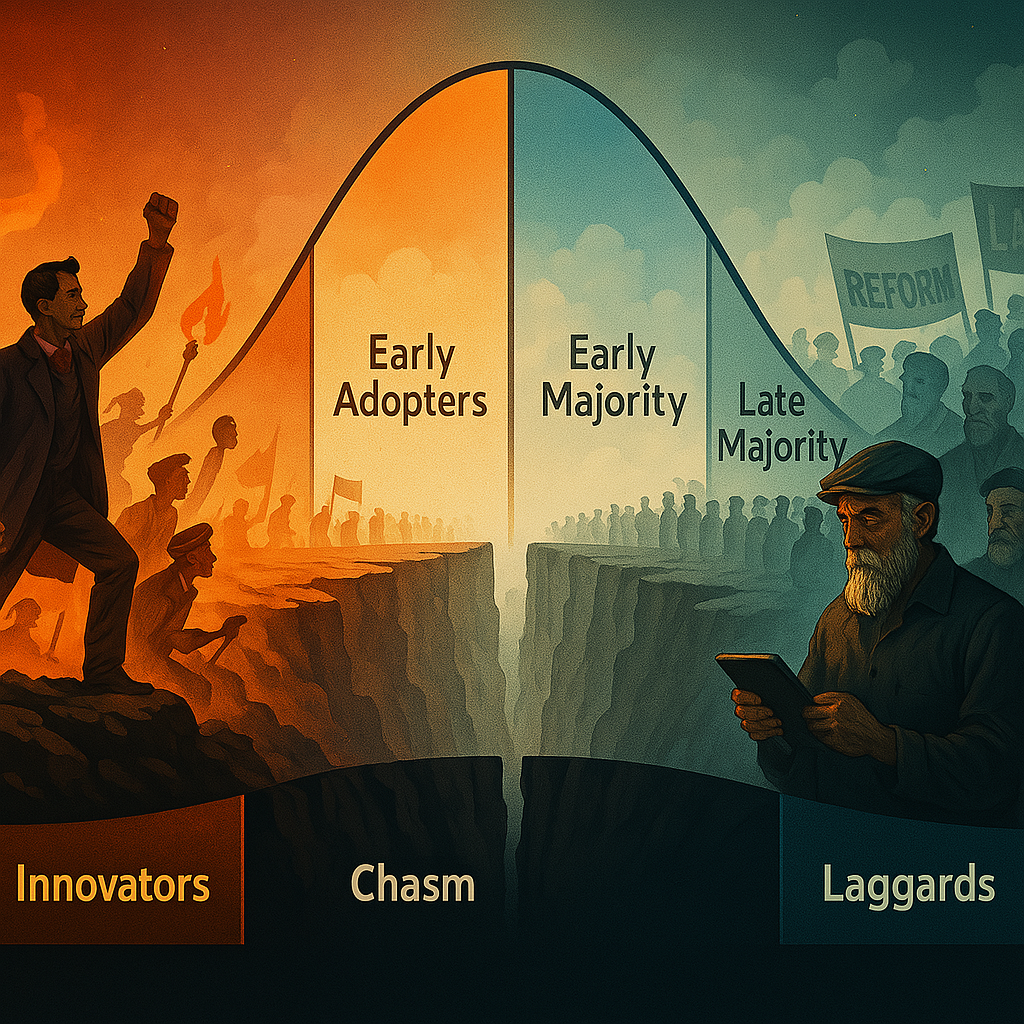Innovators vs. Conservators: The Yin and Yang of Human Progress
 Imran
Imran
My notes on The Lessons of History & Crossing the Chasm.
For the past 5,000 years, human evolution has been driven not by biological heredity but by social innovations (economic, political, intellectual, and moral) transmitted through imitation, tradition, cultural norms, and education. Imitation and tradition, like biological instincts and genetic inheritance, provide stable, time-tested solutions to common challenges.
However, human societies exist in never-ending dance between yin and yang, not stasis. Novel challenges continually emerge—climate shifts, natural disasters, pandemics, resource conflicts, geopolitical power transitions, economic transformations, and unforeseen social externalities. Traditional frameworks and established laws inevitably encounter exceptional cases where their original rationale no longer applies. Our social existence rarely achieves equilibrium; instead, we constantly navigate between opposing principles, sometimes erring toward excess, other times toward deficiency. These unprecedented circumstances necessitate innovation and controlled experimentation.
The people in charge of these experiments are exceptional individuals—the "great man," genius, or innovative minority—who devise adaptive responses to new demands. The majority typically follows their lead. This process mirrors the biological interplay of heredity and mutation.
Yet intellect, while vital to progress, carries risks: most new ideas are inferior to the accumulated wisdom embedded in traditions, which reflect centuries of collective trial and error. Dismissing these customs hastily can destabilize both individuals and communities.
This tension between innovation and tradition parallels the framework in Geoffrey Moore’s Crossing the Chasm, which examines how technologies diffuse through society. Moore distinguishes between risk-taking innovators and visionary early adopters who embrace novelty—and the pragmatic late majority and skeptical laggards who resist change until its benefits are irrefutable. The “chasm” represents the critical gap between early adoption and mainstream acceptance, where many ideas struggle because they fail to address the practical concerns of the majority. To succeed, history’s “innovative minorities” must not only generate ideas but also bridge this divide by proving their utility and aligning them with some existing values (MAYA principle: Most Advanced Yet Acceptable).
Thus, innovators and conservators serve complementary roles. Innovators propose ideas that can save humans from deaths, sufferings and the extinction of our species, while conservatives subject them to rigorous scrutiny, ensuring only the most resilient innovations survive. This is the Hegelian dialectic in action, where the thesis of tradition encounters the antithesis of innovation, ultimately producing a synthesis that incorporates the strengths of both to advance human civilization.
The most resilient civilizations maintain this delicate balance, preserving the stabilizing force of tradition while remaining sufficiently flexible to incorporate beneficial innovations when traditional solutions prove inadequate.
Subscribe to my newsletter
Read articles from Imran directly inside your inbox. Subscribe to the newsletter, and don't miss out.
Written by

Imran
Imran
Creating content related to startups, AI, web development, and unconventional, yet innovative ideas.